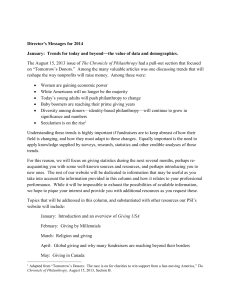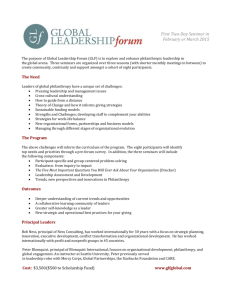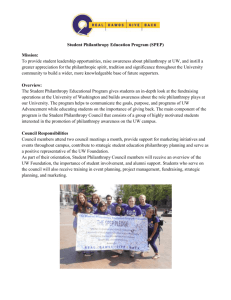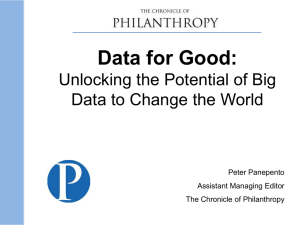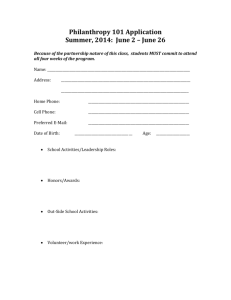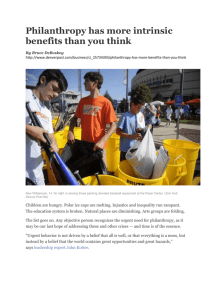The Social Relations of Philanthropy: Patterns of Exchange among
advertisement
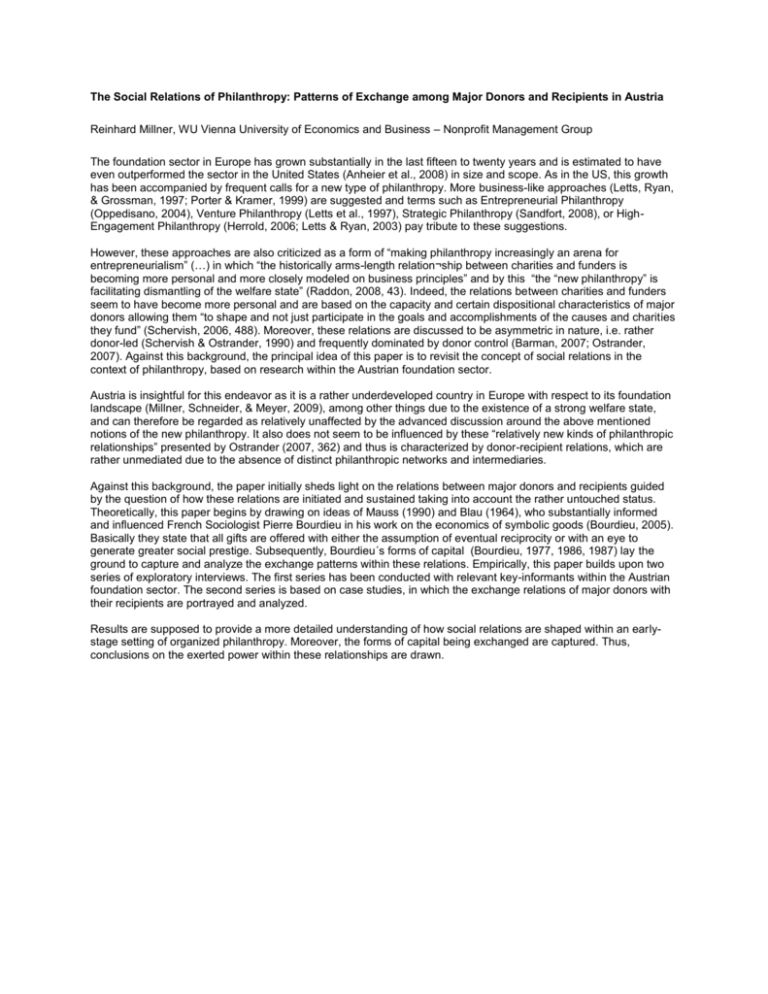
The Social Relations of Philanthropy: Patterns of Exchange among Major Donors and Recipients in Austria Reinhard Millner, WU Vienna University of Economics and Business – Nonprofit Management Group The foundation sector in Europe has grown substantially in the last fifteen to twenty years and is estimated to have even outperformed the sector in the United States (Anheier et al., 2008) in size and scope. As in the US, this growth has been accompanied by frequent calls for a new type of philanthropy. More business-like approaches (Letts, Ryan, & Grossman, 1997; Porter & Kramer, 1999) are suggested and terms such as Entrepreneurial Philanthropy (Oppedisano, 2004), Venture Philanthropy (Letts et al., 1997), Strategic Philanthropy (Sandfort, 2008), or HighEngagement Philanthropy (Herrold, 2006; Letts & Ryan, 2003) pay tribute to these suggestions. However, these approaches are also criticized as a form of “making philanthropy increasingly an arena for entrepreneurialism” (…) in which “the historically arms-length relation¬ship between charities and funders is becoming more personal and more closely modeled on business principles” and by this “the “new philanthropy” is facilitating dismantling of the welfare state” (Raddon, 2008, 43). Indeed, the relations between charities and funders seem to have become more personal and are based on the capacity and certain dispositional characteristics of major donors allowing them “to shape and not just participate in the goals and accomplishments of the causes and charities they fund” (Schervish, 2006, 488). Moreover, these relations are discussed to be asymmetric in nature, i.e. rather donor-led (Schervish & Ostrander, 1990) and frequently dominated by donor control (Barman, 2007; Ostrander, 2007). Against this background, the principal idea of this paper is to revisit the concept of social relations in the context of philanthropy, based on research within the Austrian foundation sector. Austria is insightful for this endeavor as it is a rather underdeveloped country in Europe with respect to its foundation landscape (Millner, Schneider, & Meyer, 2009), among other things due to the existence of a strong welfare state, and can therefore be regarded as relatively unaffected by the advanced discussion around the above mentioned notions of the new philanthropy. It also does not seem to be influenced by these “relatively new kinds of philanthropic relationships” presented by Ostrander (2007, 362) and thus is characterized by donor-recipient relations, which are rather unmediated due to the absence of distinct philanthropic networks and intermediaries. Against this background, the paper initially sheds light on the relations between major donors and recipients guided by the question of how these relations are initiated and sustained taking into account the rather untouched status. Theoretically, this paper begins by drawing on ideas of Mauss (1990) and Blau (1964), who substantially informed and influenced French Sociologist Pierre Bourdieu in his work on the economics of symbolic goods (Bourdieu, 2005). Basically they state that all gifts are offered with either the assumption of eventual reciprocity or with an eye to generate greater social prestige. Subsequently, Bourdieu´s forms of capital (Bourdieu, 1977, 1986, 1987) lay the ground to capture and analyze the exchange patterns within these relations. Empirically, this paper builds upon two series of exploratory interviews. The first series has been conducted with relevant key-informants within the Austrian foundation sector. The second series is based on case studies, in which the exchange relations of major donors with their recipients are portrayed and analyzed. Results are supposed to provide a more detailed understanding of how social relations are shaped within an earlystage setting of organized philanthropy. Moreover, the forms of capital being exchanged are captured. Thus, conclusions on the exerted power within these relationships are drawn.

